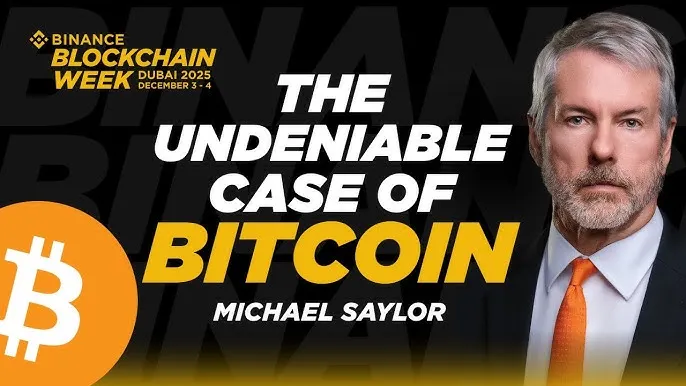Matrixport Market Observation: From the plunge to the reflux, are the bottom signals of the crypto market converging?
- 核心观点:比特币暴跌后现筑底信号。
- 关键要素:
- 链上资金回流,抛压减少。
- 机构逆势加仓,增持比特币和以太坊。
- 宏观环境转暖,风险偏好回升。
- 市场影响:恐慌缓解,为反弹积蓄动能。
- 时效性标注:中期影响。
BTC plummeted from its early-month high of around $126,000 to around $104,800, a drop of over 14%, breaking through key support. This technical breakdown triggered a chain reaction of margin calls, setting a record. The trigger came from a macro perspective: the US's sudden announcement of a 100% tariff on Chinese goods triggered widespread risk aversion, prompting institutional and quantitative funds to cut their exposure, further exacerbating the decline. Meanwhile, on October 14th, the US Department of Justice announced the seizure of approximately 127,000 BTC from Cambodia's Prince Group, valued at over $15 billion, marking the largest crypto asset forfeiture case in history. Concerns about further selling pressure in the market led to a short-term cooling of risk appetite.
As of October 20th, BTC hovered around $108,500, down approximately 5% from a week earlier; ETH fell back to $3,980, still significantly below its early-month high. Market sentiment quickly shifted from optimism to caution, and sudden regulatory events also played a significant role in this round of volatility. (Data source: Coingecko)
Bottom signal resonance: on-chain capital inflow and institutional counter-trend increase in holdings
On-chain data is sending positive signals. Initially, a large amount of BTC flowed into exchanges for sell-off, but as prices bottomed out, the trend reversed—recently, Bitcoin has seen net outflows again, indicating a decrease in selling pressure and a re-locking of long positions. Stablecoin supply remains stable, and USDT's market capitalization hasn't plummeted. Instead, funds are entering the market through stablecoins to buy at the bottom, demonstrating that market liquidity remains ample. Notably, "whale addresses" are buying at low prices. Wallets holding over 100 BTC added approximately 16,000 BTC in a few days, indicating long-term capital positioning at the bottom. ETH staking is also robust, with no panic unstaking and, instead, new deposits flowing in, demonstrating continued long-term confidence. The market is gradually transitioning from extreme panic to a more rational phase, with supply and demand structures tending to recover.
Amidst retail investor panic, some institutions bucked the trend and increased their holdings. Crypto investment firm BitMine increased its holdings by approximately 379,000 ETH (approximately $1.5 billion) in batches within days of the crash, aiming to raise its holdings to 5% of the total ETH supply. Co-founder Tom Lee stated, "This round of deleveraging has actually created a long-term investment opportunity." Similar strategies have also emerged in the Bitcoin (BTC) space. Historically, whenever institutional funds enter the market against a backdrop of significant market sell-offs, it often signals the formation of a bottom. Rational institutional buying and ample funding are crucial drivers of market confidence.
Options market: Panic hedging is high, and volatility may reach a turning point
The options market experienced significant volatility during the market crash. Implied volatility (IV) for short-term contracts soared to 50%, demand for deep put options surged, and the skew shifted significantly to the bearish side. A large number of market makers were forced to hedge their short gamma, exacerbating spot selling pressure. However, with the expiration and settlement of approximately $4.8 billion in options contracts, this selling pressure has gradually eased. Interestingly, some funds began selling volatility and put options during periods of high IV, betting that the market would not fall further. Historically, concentrated risk-averse positioning and high IV often signal extreme panic—a sign that a reversal is brewing.
Macroeconomic trends are warming: the Fed turns dovish, the dollar falls, and risk appetite picks up
At the macro level, the Federal Reserve's recent rhetoric has shifted toward caution, with the market generally expecting a pause in interest rate hikes this year, with the possibility of a cycle of rate cuts beginning in 2025. The US dollar index has retreated from its highs, and gold has also retreated after reaching a record high, indicating a easing of risk aversion. Meanwhile, US stocks have rebounded, and the bond market has stabilized, indicating a rebound in overall market risk appetite. For the crypto market, this represents a triple boon: improved liquidity expectations, peaking interest rates, and a weakening US dollar. Historically, Bitcoin has often been the first to benefit from a rebound in macro liquidity.
Altcoin differentiation: RWA and platform token sectors show resilience
The altcoin sector showed significant divergence. High-beta tokens generally experienced significant declines, while projects with proven return models or application scenarios were relatively resilient. The RWA (Real World Assets on-chain) sector performed exceptionally well, with tokens such as Centrifuge (CFG) and Tharwa (TRWA) bucking the market trend and surging amidst volatility. Exchange tokens (BNB and OKB) saw much smaller declines than the market average, bolstered by solid fundamentals and buyback mechanisms. Market capital is flowing from speculative altcoins to assets backed by real value, signaling a structural revaluation. This also suggests that the next round of capital rotation may initially focus on leading projects and the RWA theme.
Strategic Recommendation: Make good use of structured products in volatile markets
During the bottoming phase of volatility, investors can use structured products to implement both offensive and defensive strategies:
- Accumulator (accumulated buying): suitable for bulls to build positions in batches during a downtrend;
- Dual-Currency: Suitable for earning high returns in volatile markets;
- SharkFin: Suitable for investors who want to preserve their principal while participating in volatile returns;
- Snowball: Suitable for medium- to long-term investors who are good at judging price ranges and pursuing stable returns.
Through the combination of derivatives, investors can strike a balance between risk and return and seize structural opportunities in volatile markets.
After this drastic sell-off, market weaknesses have been exposed, but bottoming signals are also emerging. On-chain flows, institutional buying, a warming macro environment, and options signals all point to a common conclusion: the panic phase may be over, and a bottoming process is underway. Short-term volatility will continue, but the entry of long-term funds and an improving macroeconomic environment are building momentum for the next rebound.
The above content is from Daniel Yu, Head of Asset Management. This article only reflects the author's personal views.
Disclaimer: Markets are risky, so invest with caution. This article does not constitute investment advice. Digital asset trading can be extremely risky and volatile. Investment decisions should be made after carefully considering your individual circumstances and consulting a financial professional. Matrixport is not responsible for any investment decisions based on the information provided.



